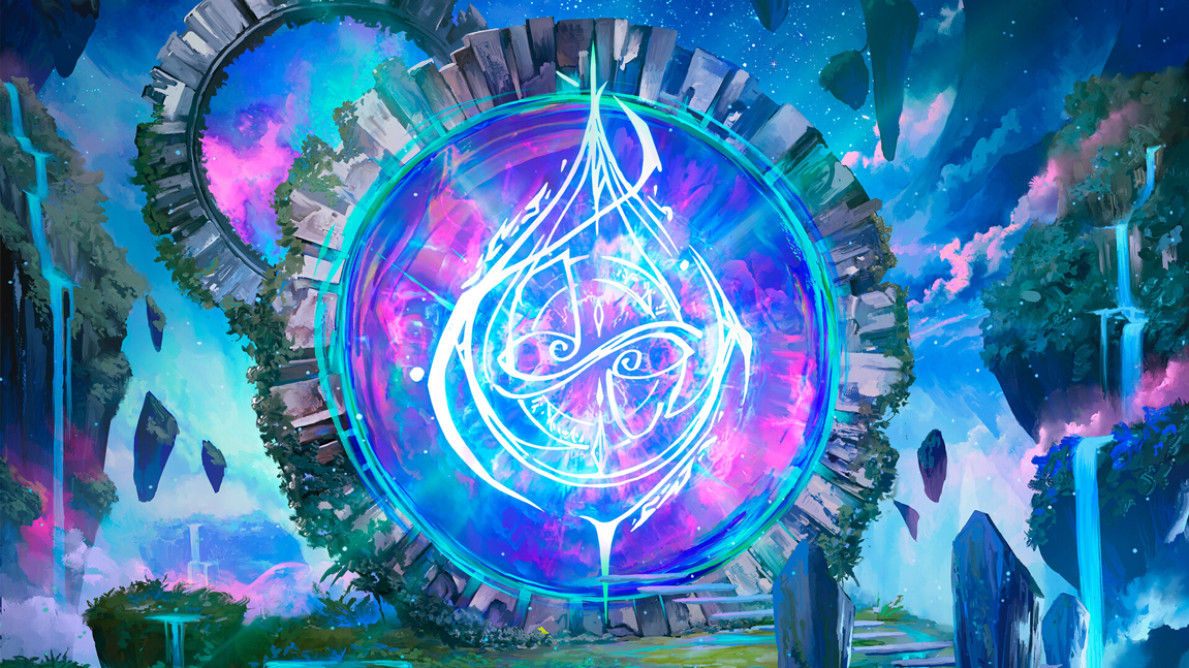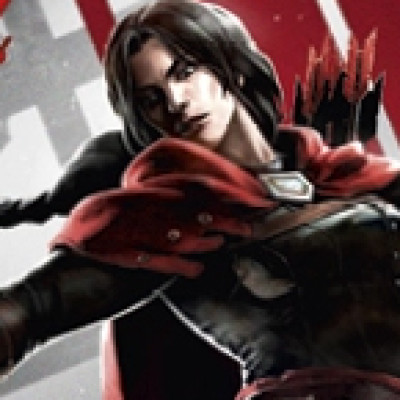I love Blitz. The eclectic mix of tight gameplay, short games, and variety of available heroes is the perfect mix to draw in a player like me: competitively minded and looking to get reps in constantly. Even at the kitchen table with my wife, Blitz wins out for us over Classic Constructed. When I taught our friends how to play, we picked Blitz. Now when we have friends over for game night, we reach for the format that lets us rotate through opponents and decks multiple times. In terms of competitive play, the format offers an incredibly wide variety of heroes, including underplayed fan favorites.
Unfortunately, when I took the plunge into the wider competitive scene, I discovered I was largely alone in my love of Blitz. While my local scene played a variety of archetypes and heroes, I was inundated with constant negativity surrounding the format the moment I set foot in any other store. Online discourse is not much better: a constant stream of how Blitz is “not how FAB was meant to be played” and how horrible Zen, Brutes, and Wizards are for the format. According to the apparent consensus of the online community, the format didn’t showcase the ins and outs of Flesh and Blood’s deep back and forth gameplay, and instead is a swingy mess. Combined with the life totals also rewarding rushdown decks to an oppressive degree, it paled in comparison to Classic Constructed, which conveniently offered all of the components Blitz is missing, and none of its downsides.
I’ll step out boldly and say that, if those descriptions have kept you from testing the waters of Blitz, you might be judging a book by its cover and missing out on some of the best the game has to offer.
The popular perception of Blitz stems from the fact that it isn’t Classic Constructed. Rather than evaluating the format for what it is, I think an unstated either/or dichotomy enters the minds of many players, which leads to them comparing it to Constructed. This creates a situation where the pros of one format become the cons of the other. Constructed is slower, therefore Blitz’s speed is bad. While there is nothing wrong with disliking a rushdown meta, the idea that the format is all no block, no nonsense aggro is disingenuous. Across my time in competitive Blitz, I always find more innovative strategies, and many of them not in the aggro sphere. The truth is, if you’re looking for deck variety, Blitz offers more than Constructed can.
However, in order to see this, we have to get past the elephant in the room.
Welcome to the Rushdown
I subscribe to Dylan Davis’ theory that Flesh and Blood is better categorized and mapped as a fighting game than a TCG. Terms like Control and Midrange are rather nebulous if we try to apply them to FAB, to the point where the only unifying factor is how fast they plan to take someone from 40 to 0 life. Understanding the prevailing theory on tempo is important, but it doesn’t translate very well to understanding what a deck or hero is trying to do. Categories such as Rushdown, All-Rounder, Grappler, and Zoner do a much better job describing what a hero’s strategy is, and what their games look like when paired against heroes of different categories.
To take the analogy further, I think the best way to look at different formats is to compare them to different fighting games. If FAB is truly a fighting game, then Blitz is an anime tag fighter. Blitz is Dragonball FighterZ.
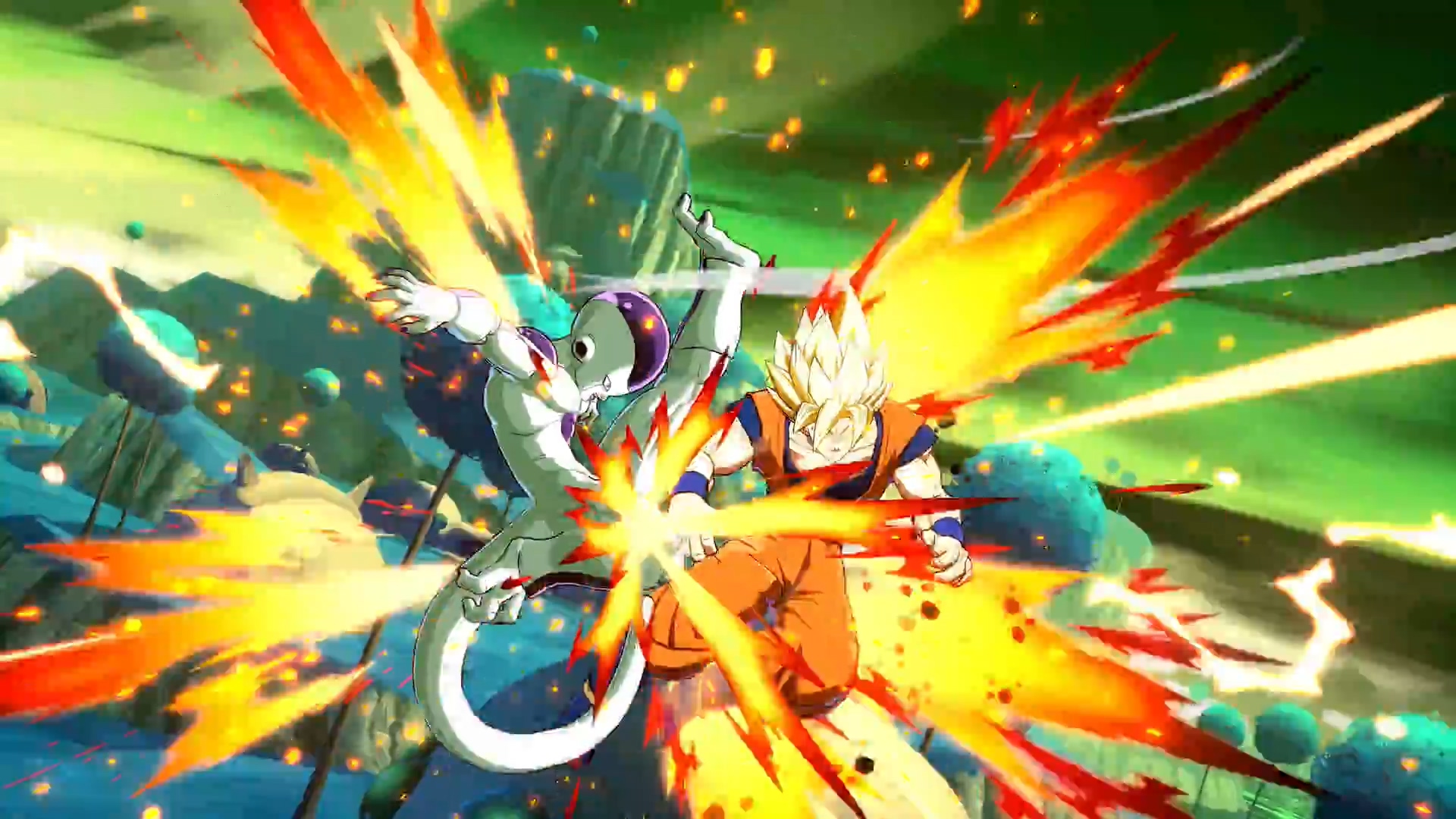
While the world of anime fighters is vast, they commonly feature extended combos that games like Street Fighter and Tekken don’t emulate (it really takes a gif to showcase this correctly). Consequently, this is usually paired with an emphasis on long blockstrings, which means even when an attack is blocked, the combo is continued for several more attacks. The attacker is fishing for one hit so they can execute their long combo, and the defender has to block several attacks chained together in a row until the attacker loses enough tempo for a quick jab to break the string. It’s very fast, but also very technical. Players have to find the right moment to strike their opponent, and patiently put in their combo to find the one hit they need.
A tag fighter is a game where players control a team of multiple characters – usually three – as opposed to just one. Tag fighters emphasize building a team and mastering the ins and outs of more than one character, and how they interact with the rest of your team. To further complicate matters, tag fighters almost always feature an “assist” mechanic, where fighters who are still standing and not fighting in the ring can be called upon to make special attacks. Assists can be defensive and force a change in tempo, but most often they are used to create combos that are otherwise impossible to execute. In some cases, they can even be used as the link between two entirely different combo routes, further increasing the amount of damage one can deal if they get the first hit.
Dragonball FighterZ combines both of these to create a game with some absurdly long combo turns. There’s a niche turn of phrase in anime fighter communities, “watch my movie,” because of how obscenely long some combos can be with no ability for your opponent to stop them. Nowhere is this displayed better than the EVO 2024 Grand Finals, where Inzem ends the first match with a total perfect: He defeated each of Hikari’s fighters without suffering a single point of damage in return. At multiple instances, commentators declare fighters as downed the moment they suffer a hit at half health or less because the entire cast of characters is capable of extremely long combos, especially when backed by assists. These aren’t even the longest combos in the game, either; in matches I’ve played, I’ve seen combos last twice as long as the ones on display here.
From an outsider’s perspective, one might say unbridled aggression is the best strategy. If each character on average can be downed with two full combo routes, then all it takes is six to win the game. If six punches is really all you need, why not maximize the chance of landing them and play a character that can throw a lot of them? I think many FAB players think similarly when they see Blitz.
An enfranchised FighterZ player, however, would tell us rushdown is not automatically the best. Looking at the Grand Finals sets again, we see multiple matches where both players are maneuvering to manage the space between them. We also don’t always see lopsided matches where one player dominates the other. Round 3 of Set 1 ends with both players down to their last characters.
In other words, FighterZ clearly isn’t zero-sum. Truthfully, neither is Blitz. That’s because both don’t revolve around uninhibited aggression. Rather, the core of both games centers on jockeying for the advantageous position, and then pushing that advantage as far as possible.


I’m not suggesting that Blitz isn’t an aggro-dominated format. Aggro is certainly the best archetype in the format, especially since Victor Goldmane reached Living Legend. I’m not saying the rules of the game don’t inherently make the format a little swingy. Less life does leave less room for error. What I am saying is aggro is not the best because of the small life totals and swingy nature. Rather, aggro is very good at obtaining and maintaining the advantage. This also explains the dominance of Wizard: The battle for the advantage isn’t just able to be fought and won at instant speed: It’s fought in their hand, not the cards they’re playing every turn.
Interaction in All of Its Forms
It would be disingenuous to say this is the only form this criticism takes. It would also be overgeneralizing – the exact thing I’m trying to push against. There’s other lenses to look at this specific aspect of the format with. The takeaway many other players have is Blitz promotes non-interaction, and the aggro and Wizard dominance is the product of that.
If you have played Blitz long enough, you know this is true enough. On paper, it’s hard for a reactive strategy to trade resources for space when all resources are more limited. The Ranger can’t trade life as effectively for disruption. The Guardian can’t bide its time to stockpile resources; it has to spend them to survive. Getting ahead in the game can feel first-come, first-serve, and when you’re getting hammered by Brutes and Ninjas out the gate, it can feel almost impossible to come back from. The past year alone introduced Aurora and Zen. New releases feel like they inject more speed into an already blistering fast format.

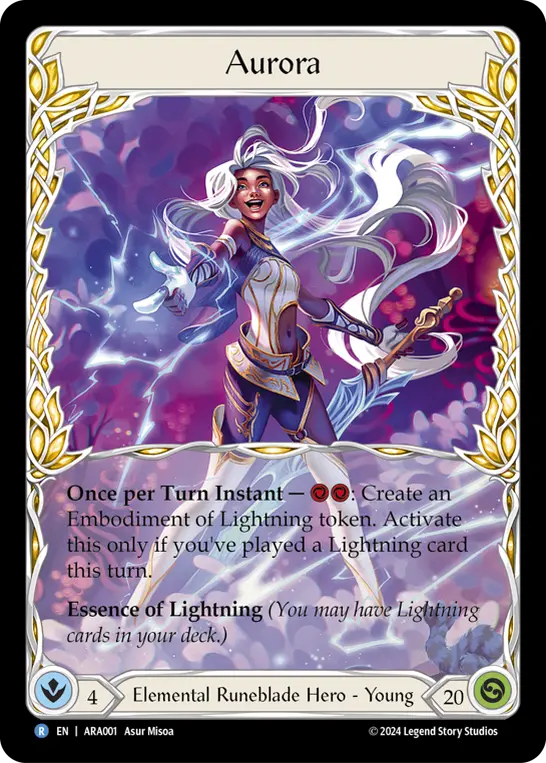
However, I believe this is a surface-level observation, and while it isn’t entirely incorrect, it is a half-truth. Yes, the format is fast, and it can feel difficult to meaningfully interact with the opponent. That said, once we dive into the format, I feel the true speed of gameplay is exaggerated. Kayo is a real menace, and Data Doll can put the hurt just as fast. Zen is also egregious, and only finally prompted the ban of Traverse the Universe recently. Blaze getting free casts, makes her harder to slow down than the rest of the Wizards.


It may not look like the most fun metagame picture FAB has to offer. However, I stated before this was only half true. One of the biggest sins committed against Blitz is that we both do and don’t treat it like Constructed. For whatever reason, I find players are much more willing to discount off-meta heroes in Blitz than they are in Constructed, especially when those players don’t play the format. I’m not entirely sure why this is the case. Perhaps we expect Blitz to have a higher power level required to be functional due to the presence of fast-killing decks, and therefore we think interaction is inherently weaker in Blitz.
I think many players feel this way because they are misunderstanding what interaction is, and believe proactive aggression doesn’t fall into that category. Aggression is very much a type of interaction. While that’s a deep enough concept to be its own article, the short version is aggression forces your opponent to care about what you’re doing. Your opponent has to alter their gameplan around slowing yours with key blocks and strict resource management. While other rushdown decks have the option to race, the intricacies of the rushdown vs. rushdown matchup spread would tell us it’s not nearly as cut and dry as many players make it out to be.
The obvious rebuttal here is that no amount of blocks is stopping Kayo’s 30+ damage turns, and that’s not wrong, but it doesn’t disprove the point. I’m not saying aggro is completely balanced, and that we the players have just been playing wrong. What I am saying is the pendulum is not as far as we think it is. Because aggression is the primary interaction point, our deckbuilding needs to reflect that. Referring to my previous point, I said one of the biggest problems with Blitz is players simultaneously do and do not treat it like it’s Constructed. One of the ways we do treat it like Constructed is we apply the same class and deck building theory that we learn from Constructed. This is usually correct, but our “hindered” classes like Ranger struggle not just as a casualty of the state of the format, but also from a lack of innovation. Blitz isn’t Constructed; we do have to build differently - and I don’t honestly know how many players are willing to do that.
Building a FAB deck is hard, and many of us fear failure. Patrick Chapin, a former pro Magic: the Gathering player, accurately summarize this in his interview with Evan Erwin in 2010, and while he is talking about MTG, it very much applies to FAB. In short, we often let players better than us do the playtesting for us on a given deck, and it makes us reliant on other players’ deck building skill instead of developing our own. If you’re feeling down about those skills, heed his words carefully: “Nine out of ten decks I make are terrible, and I make a lot of decks.” The bulk of Patrick Chapin’s highlights happened after this interview, including a first place Pro Tour finish, and a second place finish in Worlds the season after. That’s a world class player telling us nine out of ten decks he builds are bad. If ten out of ten of your homebrews are bad, don’t worry, you’re not too far behind the best minds in the game.
It’s easy to blame this on the lack of recent sets for some of these classes, but I think enough new powerful generics have entered the format for players to revise and revisit reactive heroes. We know the most common axis of interaction in Blitz is beating face, and therefore any reactive deck needs to be frontloaded with powerful defensive options – even when we wouldn’t normally expect them from that hero in a different format – to seize the advantage, and then push that advantage to its limit. While it may sound strange, I’ve been enjoying a great deal of success with a defense reaction-heavy Azalea list based on Alex Truell’s own Sandscour Azalea. Every time I’ve shown the list to someone, they tell me it’s far too slow and it can never work. My win record says otherwise. I leveraged my deckbuilding, the options the equipment suite gave me, and the interaction points of the format, and now I’m accomplishing what was deemed impossible by Blitz players and the community at large. Clearly, the lack of releases for some classes isn’t the hurdle we think it is.
Holding Out for an Off-Meta Hero


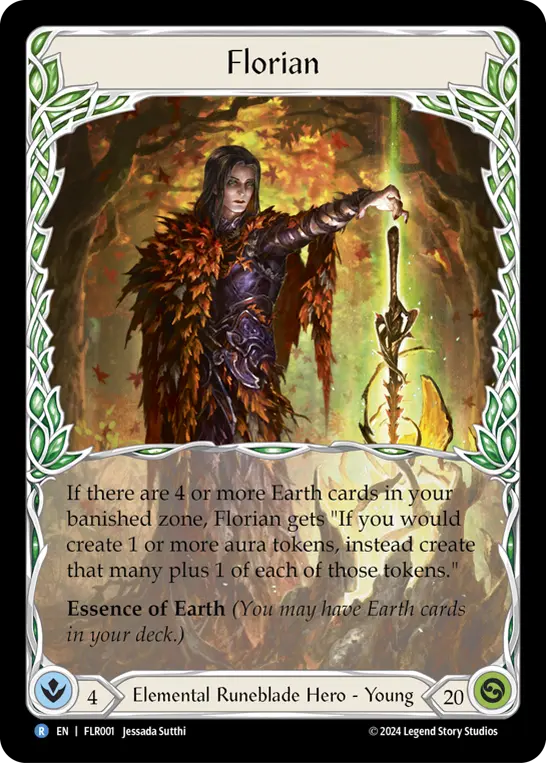
The takeaway here is there are multiple ways to get the upper hand. It doesn’t take more than a cursory glance at the format to see that. While the impacts of Crown of Seeds’ unbanning have yet to be seen at time of writing, I would be remiss not to talk about the boon the earth heroes have gotten. While they all have different gameplans, each of them play a variety of reactive options while developing their gameplan. Verdance is the most well-known, and certainly the most proactive of the bunch. Her builds tend to be less all-in than Blaze, and the Rampant Growth//Life combo requires some setup. In exchange, the Earth talent gives her access to excellent defensive options. If you like Wizard, but dislike Blaze’s gameplan, I highly recommend giving Verdance a try. While she may not always play Crown of Seeds, having the option to dig for your combo pieces and prevent damage is a welcome addition to her toolkit.
Our other Earth heroes are, in my opinion, underplayed gems. Florian has a couple different builds, ranging from grindy Runeblade reminiscent of his Constructed variants to OTK combos. All of them are slow, grindy decks that want to be reactive and disruptive. He has a lot of space to explore, and deserves a fair chance.
Terra stands to gain the most from the banlist changes. Players have been creating and tuning different lists for him since his release, and there hasn’t been much consensus on what the best version is. All of them lean into a fatigue strategy, but the specific method varies widely. Some are straightforward Earth Guardian goodstuff decks, while others lean into Channel Mount Heroic. The infamous Count Your Blessings sees play sometimes as well for the dedicated hard-fatigue lists. These decks try to use other two cost instants to consistently make a Might token at the end of the turn and swing Redwood Hammer for 5. All of these versions would love Crown of Seeds. If you’re looking for a reactive hero with plenty of room to experiment, I would recommend Terra above any other.


Of course, Terra isn’t the only viable Guardian. Fatigue is a mainstay of the format, and I’d go so far as to say it’s a pillar of its own alongside rushdown and Wizard. Yoji and Valda Brightaxe also press the advantage in the way they are built for and do it well thanks primarily to their higher life totals. Yoji’s two extra health is a powerful buff, and shouldn’t be underestimated. While Valda’s builds range from all-in on the hero power to borderline ignoring it, trading the 1 HP for a more relevant textbox is a still a potent mix. Combined with the high power attacks with disruptive on-hits, it becomes difficult to balance blocking with maintaining pressure. If anything, the Guardians of Blitz have mastered the seesaw nature of pressure in FAB. Once the opponent is forced into blocking, the Guardian rockets ahead on tempo.



While held back by the popularity of Brute, Dromai can also wrestle for that advantage with her dragons, which translates to the player giving increasingly more pressure while taking less themself. I showcased how Lexi, a hero in the class most disadvantaged by the rules of the format, still has a place both as rushdown and fatigue, and how she can win against several of the top decks .
In the wake of Traverse the Universe’s banning, Enigma, New Moon has surged in popularity. She has an incredibly unique gameplan, and while she may not be the most interactive of the heroes I’ve discussed, she’s far from the aggression-minded decks. She may only be a flash and the pan, but I think many who joined the bandwagon found a new forever deck.
Understanding that Blitz is about taking and holding the advantageous position, and what the most common axis of interaction are, allows us to reinterpret the meta and do so more fairly. Yes, Blitz is dominated by aggro and Wizard. However, the best decks in the meta aren’t simply beating face. Rather, they can assert a dominant position and push that all the way to victory. Once we go beneath the surface, we see a deep format with many decks of all archetypes that are competitive for Skirmish. The “Blitz means aggro” viewpoint isn’t treating the format fairly, and saying it promotes noninteraction is clearly not true. There’s a wealth of incredible gameplay to be had here if we’re willing to sink our teeth into something new.
The Benefit of Quick Reps
While good gameplay is important, playing Blitz has its perks beyond being a new experience from Classic Constructed. Blitz games are quicker than Classic Constructed. While getting more games in a tight schedule has a certain draw, it has tangible benefits on our play as well.
Because Blitz is fast, there are fewer decisions throughout the course of the game. Fewer decisions means every decision carries more weight. This also translates to less room for error. It’s difficult to course correct from a misplay if there aren’t enough meaningful decisions that we can make to recover. Players who specialize in aggro are often the masters of this concept. Making a sequencing mistake can cost damage, and that is the difference between winning and losing the game. It’s an often cited theory point, and one of the gateway “level up” concepts for many players getting started in aggro.
Therefore, in order to be good at Blitz, we must master our decision-making skills. That means playing better and making fewer mistakes. In short, we have to be better players overall. The faster games also make it easier to identify a misplay because the consequences are much closer to the actual misplay than they might be in Constructed. It also means we can play more games in a shorter timespan, thus giving us more chances to apply what we learn. If we can better identify our mistakes, it makes learning and growing as a player easier and quicker.

All of these make Blitz the perfect training ground. If there’s an aspect of your play you want to improve, an archetype you want to begin learning, or you simply want to push yourself towards perfect play, Blitz is the surefire way to teach yourself because it’s a cruel teacher. When you make a mistake, you will find out in the form of your opponent taking the lead or even winning. Many of my “level up” moments came from Blitz playtesting, and I owe most of my success as a player to the format. It forced me to play well or immediately face consequences.
Additionally, each game being quick allows for more repetitions in a given time span than Constructed allows for. It can be hard to fit a game of Constructed into a busy day, but Blitz is much more manageable. It’s an excellent format for building and improving the foundation of any skill a competitive player needs. Like any skill, when we have to take large swaths of time between learning and applying what we learn, it slows our progress. When we learn a language, we practice in several areas at once. We practice phonetics and isolated words, and then we place them in sentences to build our understanding of syntax too. Pretty soon we’re doing all of these things at once. If you take large breaks, you will struggle to develop that skill. Similarly, when we learn to knit or crochet, we don’t jump to sweaters. We start small, something like a washcloth or dish towel, so we can learn and identify where we make mistakes, then we tackle larger projects.


In Blitz, when you make a mistake, you know where you went wrong because the consequences are much closer to the incident. I find new players much more easily identify mistakes and get a chance to apply what they’ve learned with a fast rematch in Blitz than they do in Classic Constructed, namely because a long game of Blitz is shorter than most “quick” Constructed matches. In my experience teaching new players, Constructed does not offer the ideal learning environment Blitz does.
The other side of the coin is the presence of non-games. Because the game isn’t balanced around Blitz, the format has a higher density of games where one player never had a meaningful decision to change the course of the game. This is a criticism I see frequently. While non-games do exist, FAB inherently makes these rare. While I do believe dramatic blowouts are more likely to occur in Blitz than in Constructed, I haven’t found them to be nearly as frequent as they are made to be. I would add non-games of Constructed also exist, but it’s much more well known how rare they are and how to avoid them. If more players were invested in Blitz, they would find a similar pattern. Yes, they are more frequent than in Constructed, but they are nowhere near frequent enough to eliminate Blitz as the best format for teaching and learning, be it a new player or a new archetype.
The Beginner-to-Armory Pipeline
Most players are familiar with Blitz as their entry point into the game. I’ve made my stance on the Blitz preconstructed decks as being the best onboarding ramp into the game quite clear, and the fact that they collect dust on store shelves baffles me still. Even outdated decks are still excellent teaching tools, in my opinion.
However, the majority of players I talk to and those online say they would point a new player to an Armory Deck over the Blitz decks. In many cases, they simply state the deck being Constructed legal as the reason why. It’s hard to poke a hole in the logic. Classic Constructed is the most popular format, and attending Armory does invest players in their local community. It’s also true that, in theory, the Armory Deck is supposed to play well against other competitive Constructed decks. It may not win, and they aren’t optimized, but they are supposed to deliver an enjoyable gameplay experience.
The other popular arguments are that Constructed is the better teaching format because Blitz isn’t indicative of “the rest” of Flesh and Blood, and that Armory Decks offer competitive decks while crucially Blitz decks require a player to invest in a new deck before joining Armory. I have already established how Blitz is a great teaching tool, and it bears repeating that more games leads to more reps, which helps familiarize ourselves with rules and concepts quicker.
While true that Armory Decks are built for in-store events and Blitz decks are not, I find this argument lacking. The problem is twofold. First, while most Blitz decks are not easily upgraded in Armory-level Blitz decks, many still are. I own three Blitz decks: Fai, Dromai, and Lexi. All three of these started as preconstructed decks that I upgraded for less than $20 USD, while not making a Theseus Ship of a deck. Most of these were bulk upgrades. Each of these has put out positive records at Armory, and have even won my local Armory before. The field is diverse, but each of my opponents was playing a competitively viable hero and strategy. It’s not hard to do this with other heroes either, namely Aurora, who is quickly taking on some of Ira’s spotlight as the premier first hero for new players.
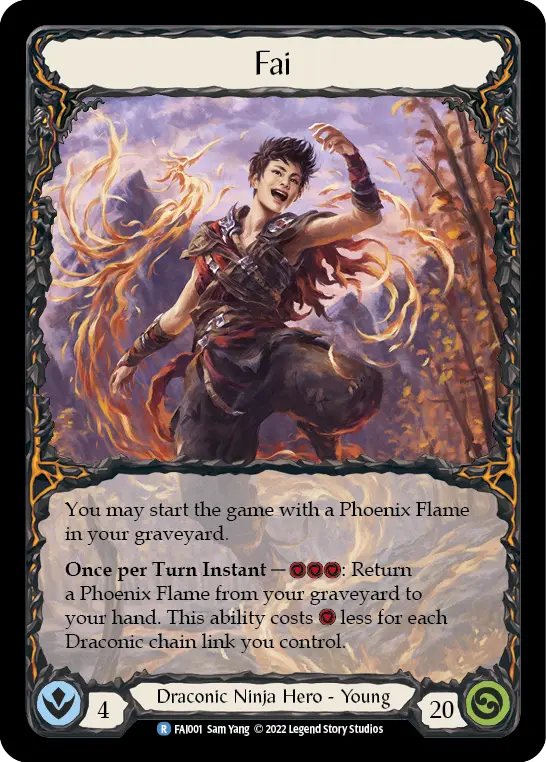
One person’s experience at Armory does not make a sample size, and neither does it make a meta analysis. However, taking these decks that were collecting dust on a shelf and turning them into Armory-winning lists is still quite the accomplishment for a preconstructed product aimed at new players.
Naturally, we now need to make the comparison to Armory Decks. The MSRP is over twice as much as a Blitz deck – or in the case of Jarl Vetreiði, four times as expensive – but the buyer gets a lot of bang for their buck regardless. A full 60-card deck with equipment, and often exclusive cards, is a great buy. Many players point to Armory Decks as being great beginner tools because they upgrade well, and introduce new players to Armory events.
However, we have to weigh both the barrier to entry and the proposed path forward. For two new players to begin playing against each other, it would cost $80 for two Armory Decks at MSRP, and that’s assuming one of them isn’t playing Jarl, the newest deck. Compare that to $30 MSRP for Blitz decks or the Rosetta First Strike decks. That’s a significant chunk of change in difference. Furthermore, at the higher price point, it leaves more room for let down depending on the contents of the Armory Deck.
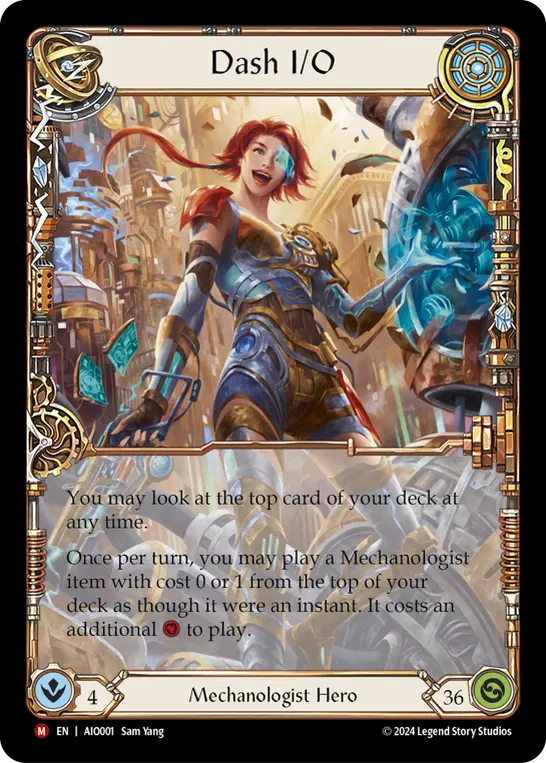
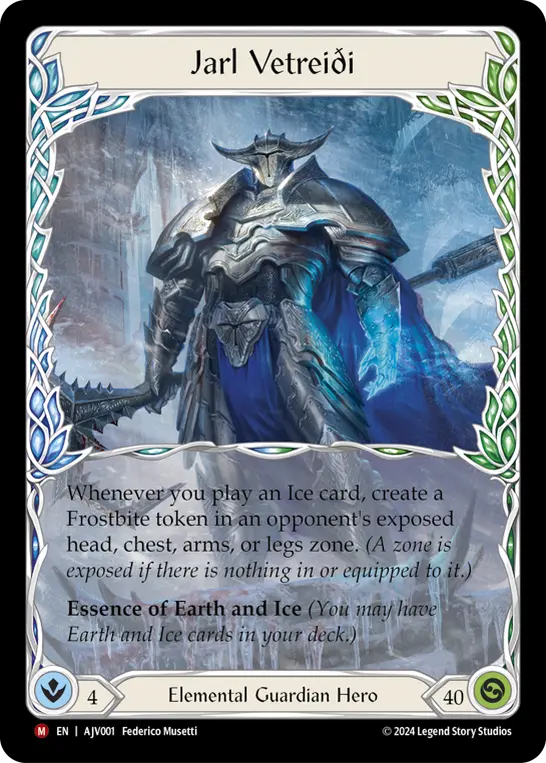
Take the two latest Armory Decks at time of writing for example. Dash I/O presents a cohesive aggressive gameplan within the core 60. While there are some odd items and a few suboptimal attacks, out of the box it plays rather well. It needs Teklo Core, Spark of Genius, and some upgraded attacks that are pricey, but there are budget alternatives to get the job done. Overall, even on a budget Dash is a great place to start.

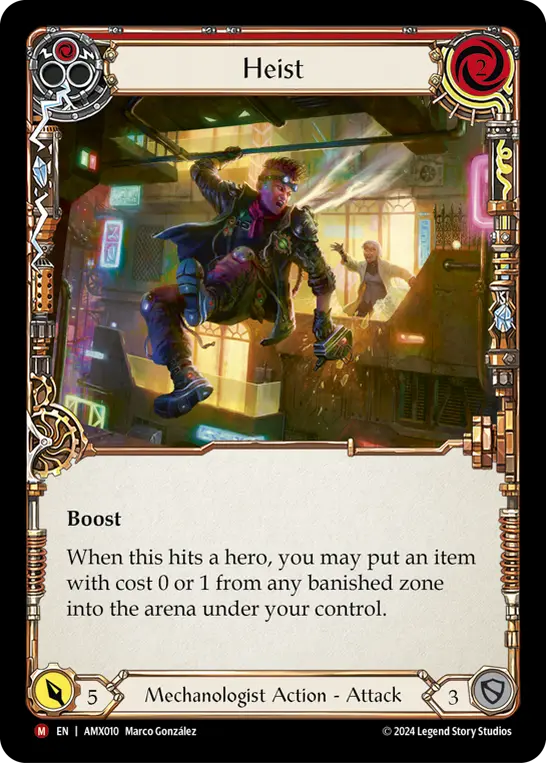
Unfortunately, Jarl Vetreiði’s decklist has developed a bit of a reputation. The list simply doesn’t hold up compared to other Armory Decks, let alone what one might find at an Armory. Armory Decks aren’t built to win an event, but they are built to have an enjoyable experience. As time has gone on, I haven’t seen Jarl’s offerings succeed at that. What I have seen is several brand new players come to Armory with the Jarl deck and have a terrible time. All of them have told me that it wasn’t losing that was the problem, it was that it felt like the deck couldn’t even play the game. Skill plays a role here to be clear. However, my community putting a lot of effort specifically into supporting these new players starting with Jarl is not the product of a skill gap. It’s because new players right now are going into their stores and looking at the latest in the series of decks aimed at getting new players involved. To get Jarl to a competitive position, he requires several pricey purchases, to the point I questioned why I was trying to play him in the first place and promptly set him down. Almost every new player I saw with him did something similar, and is now borrowing decks from other players to find something they like. I think some of them gave up on the game altogether.
It would be difficult, if not impossible, to prove that Blitz decks give players more tools to play in Armory than Armory Decks. I personally don’t believe that is the case. However, we aren’t discussing players joining Armory: We’re discussing new players joining Armory. That’s a big difference. New players need to find the game enjoyable before they are willing to invest more into it. This is true of everyone in any hobby or activity. If we don’t like it, we won’t spend our money on it. By the same token, buying an Armory Deck and playing against other people’s Classic Constructed decks is not always going to be an enjoyable experience for the price point, especially in a game so centralized around competitive play. In other words, if you’re reading this article, you probably aren’t the kind of person that only has casual Constructed decks, and all of your decks are probably for the Armory at the very least.
As an aside, during the redrafting and editing process, Armory Deck: Aurora released. We haven’t had enough time with the decklist to see how it performs, but on paper it looks like it could be the best one ever released in the product line, and has certainly pushed Aurora to the top of the meta. This is one I would hand any new player out of the box as their intro to Classic Constructed. I want to stress that the point I’m making is not that Armory Decks are bad products, but rather they shouldn’t be the first product a new player uses to learn the game.
For that same price tag, one could tell that new player to buy two Blitz decks, find an experienced player, and play games together to learn. Or, if that veteran player has competitive Blitz decks, hand one to the new player and play something more fair into them. While that might sound like an indictment against the format – “You can’t play every top tier deck against a new player and expect they enjoy learning” – I would say the same about Constructed. Put another way, the power level of the games is secondary to the format for learning.
It is easy for a veteran player to forget what their first few weeks in the hobby were like. We know we like Constructed, and we want new players to have fun just like we do. Fun is subjective, of course, but in my experience new players have had far more enjoyment playing Blitz to learn the game and finding a Constructed deck they like instead of buying an Armory Deck out the gate and jamming it. If your community has a Blitz Armory event, upgrading that preconstructed deck – assuming the hero is still legal – isn't necessarily expensive, and still leads to great games and gets players involved with the community.
Of course, if the community doesn’t have Blitz for Armory, that new player will probably go on to buy an Armory Deck, and they should: They’re amazing products. Both my wife and I have purchased several and we love them. While they can be hit or miss, the majority have been great starts to competitive journeys. The key difference, however, is that they didn’t start their journey into the game from that point – it wasn’t the first product they purchased or received. That player had a chance to buy in cheap, start small, and really explore the depths of the game more before thrusting themselves into competitive play. They had more fun early on, and that’s what sold them on the game and made them want to invest in it. A true beginner product should have something for that player’s continuing journey, but it shouldn’t only be fun if that player invests more either. I find many Armory Deck’s don’t fit into that category, but many Blitz decks do. I would go so far as to argue Blitz is a necessary step for easing someone into our complicated game.
What of the Common Man?
I’ve gone through great lengths to show how Blitz’s deck building rules make it the ideal format for new players. However, Blitz isn’t the only 40 card format we’re playing young heroes in. Commoner stands as a sanctioned alternative. If these deck building rules are what makes Blitz the best learning format, then we should see a similar pattern in Commoner.
I’ll start off by saying while my journey into Commoner has only just begun, it’s an awesome format. It is an entirely separate metagame to either Constructed or Blitz; and while Blitz favorites such as Valda Brightaxe, Blaze, and the Emperor aren’t legal, it makes up for it by by having no Living Legend system, meaning multi-format all-stars like Ira, Briar, and Iyslander are right at home. Commoner has incredible variety, and it’s very accessible, letting new players build top tier decks for a little more than what most consider pocket change. Better still, the gameplay feels good, and is reminiscent of our early steps into the game. All told, it’s a great place to be, and certainly new player friendly and appealing to veterans alike.



I’m not here to say one format is better than the other outright: That’s the notion I’m trying to defeat when the comparison is made to Constructed, and it would be tone deaf to perpetuate that here. My comparison of Blitz and Commoner is not about which is the better format. It’s about why someone might play one over the other.
Commoner has incredible deck variety. Every class is represented well. If a new player picks up a Blitz precon, they can make that deck into a legal Commoner deck no matter what. That’s certainly a leg up over Blitz, where there’s a chance that player learns to play with a hero that is already in Living Legend. The bigger draw here is the Ira Welcome Deck new players may receive introduces them to almost certainly the best hero in the format. The fact that a new player can receive a free deck, and then spend $20 in singles to get most of the best deck in the format* is a surefire way to retain them, and avoid the awkwardness I pointed out in regards to Armory Decks. Knowing your hero will never rotate is also a major draw.
It’s hard to understate how good the gameplay feels. If non-games are someone’s biggest worry, Commoner eliminates them more than the base rules already do for Constructed. The metagame is entirely different from every other format as well, even after the recent major banlist changes put Zephyr Needle, Rosetta Thorn, and Waning Moon behind bars and released Ball Lightning from its seemingly permanent place on the list in each other format. It creates a fun and interesting deck building problem, and the resulting gameplay is fun and unique.




However, that uniqueness may also be its biggest drawback. It’s a moot point to say “if you don’t like the meta, you won’t have fun.” That doesn’t mean anything as players. For a new player, however, the way a strategy works in Commoner may not translate to how it operates in Blitz or Constructed. For example, the mechanisms of a fatigue deck in Commoner will look vastly different than it does in Blitz or Constructed. This is far from the largest hurdle a newer player will have to overcome in their journey, but it is an additional one. The knowledge gained in Commoner doesn’t always transfer over. That doesn’t mean it’s bad by any means.
Circling back to our fighting game analogy I used in the beginning of this article, we might think of Commoner as a different fighting game. It may be Dragonball Budokai, especially the first two installments. They utilized a unique combo system no other fighting game had at the time, where special moves weren’t just inputs. Rather, they were full-on combos. Almost every character had the same base combo to do a beam attack: Four punches and the energy button. Kamehameha as the Z Fighters, Vegeta’s Galick Gun, Piccolo’s Special Beam Cannon, all of these iconic attacks from the show that we may think of as the mainstay ki attack of a particular character were all the same input. It wasn’t until the second game that one could do a simple input to launch these, and even then, they were the only ones: every other special move required a pre-made combo. Most every character had the exact same combo inputs for their specials. Consequently, this also meant Budokai was one of the few games where one could combo without any attacks connecting, a rather bizarre oddity that some characters have in any given game, but never every character on the roster, let alone every single move.
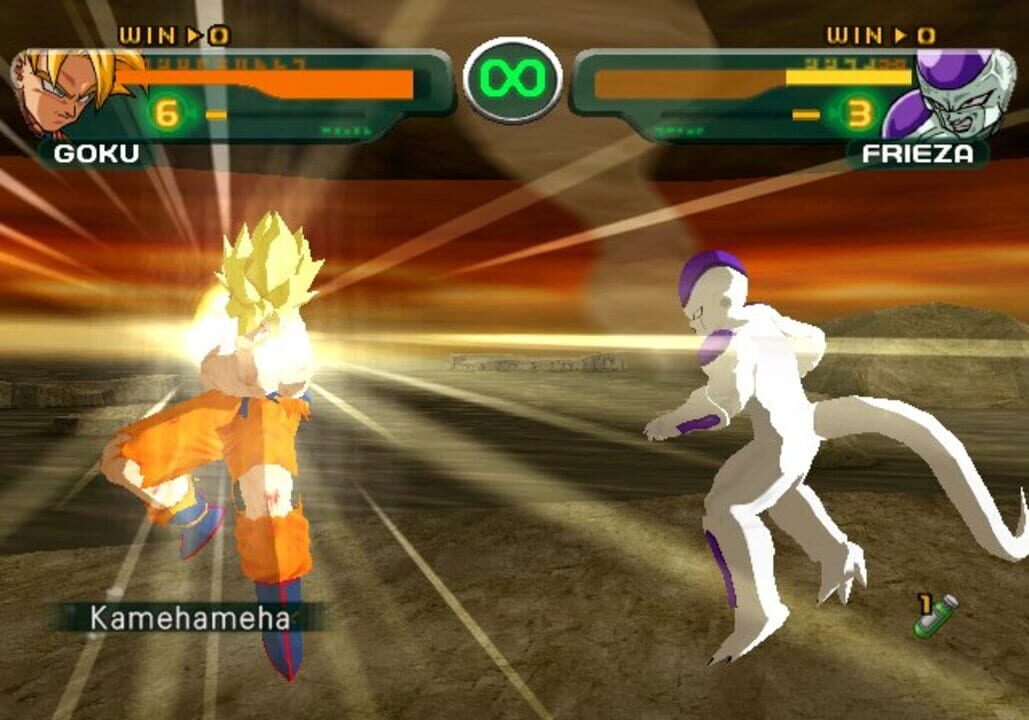
This made some fighting game fans dismiss it as overly simplistic, and lacking any depth. The truth, of course, couldn’t be further: Budokai combos had plenty of depth, many of which are based on linking these pre-made combos together with each character’s unique normal moves, even starting them far from hitting range to begin damaging them with a special move. In fact, touch of death combos like we see in Dragonball FighterZ exist!
Of course, transferring from Budokai to most any other fighting game would be very jarring, because Budokai’s base systems are so unique compared to any other fighting game. Similarly, going from Commoner to any other format is quite a shift, because archetypes may look, act, and even feel different than their Constructed counterparts. The principles of the format can be siloed from the rest of the game. An Ira deck can look vastly different in terms of composition and ratios of cards in Commoner than she does in Constructed. Of course, it’s relatively easy to learn this change. It’s hard to imagine the environment that would make the jump to Constructed gameplay from Commoner steep. Certainly less dramatic than changing from Budokai to FighterZ.
In comparison, Blitz’ decks are closer to Constructed, but as I’ve touched on already I believe they may be too close at times. Still, Blitz gives a better picture into “the rest of FAB” comparatively. Most heroes play the same cards in Blitz that they do in Constructed, with tweaks being made just to account for the format. While games of Commoner are still short, and therefore better for learning, the lessons learned in Commoner may not transfer over into other formats as easily as they do for Blitz. The target audience for Commoner isn’t new players: It’s enfranchised players looking for something new. Commoner has plenty to offer everyone, but so does Blitz, and I think Blitz targets a far wider audience, and its features certainly appeal to players of all skill levels.
Wrapping it Up
In conclusion, Blitz is undervalued and underplayed. We as players have misunderstood what the format is trying to make us do, and have since written it off because of the unspoken push-pull of Constructed vs. Blitz. The decision to play Blitz or not, or any format for that matter, shouldn’t be an either/or comparison to Classic Constructed, and doing so does our game, our community, and ourselves a disservice. If you haven’t considered Blitz in a while, I really recommend giving it another chance. Once you dig in, I don’t think you’ll be disappointed in testing your skills in a new way.

